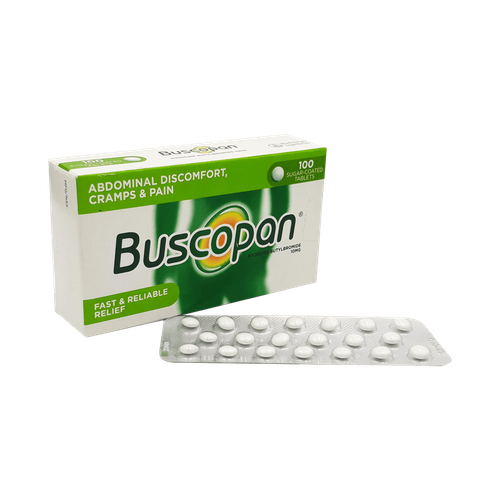This is an automatically translated article.
Pain is a common symptom of many diseases. Analgesics are medications that are used to relieve discomfort associated with illness, injury, or surgery. Because the pain process is so complex, there are many classes of drugs that provide pain relief by acting through a variety of physiological mechanisms. However, when using high-dose pain relievers, caution should be exercised.
1. Some things to know about pain relievers
Pain relievers are drugs used to relieve discomfort associated with illness, injury, or surgery for a patient. Analgesics can be classified into groups based on pharmacological aspects as follows:
Paracetamol (Acetaminophen): this is a drug that increases the body's pain threshold, but has little effect on inflammation. Non-steroidal anti-inflammatory drugs (NSAIDs): These drugs work on substances that cause inflammation, pain, and fever in the body. Analgesics in this group are only effective for mild, localized pain; mainly treats acute pain and is only effective for pain in the periphery (skin, muscles, bones, joints,...) rather than visceral pain (kidney, stomach,...) . Specifically, they work well with inflammatory pain (joint pain, myositis, neuritis, toothache ). Morphine-type pain relievers: Morphine-type pain relievers, also known as opioid analgesics, provide more pain relief when taken orally than NSAIDs. The drug is effective for extensive pain such as visceral pain such as: pain after surgery, trauma, pain due to cancer at the end stage, severe burns, gallstones, kidney stones, peritonitis, appendicitis, perforation of the stomach,... The representative drug of this group is morphine. Opioids that are more potent than morphine include hydromorphone (Dilaudid) and oxymorphone (Opana). But the most potent opioid used clinically is fentanyl, which, in intravenous form, is 70 to 100 times more potent than morphine. Fentanyl is also available as a long-release patch (Duragesic) and as a lozenge that dissolves in the mouth (Actiq). Codeine is a less potent pain reliever in its class, often prescribed in combination with acetaminophen for pain, such as toothache. Codeine is only 1/10 as strong as morphine. The key difference between anti-inflammatory drugs and opioid analgesics is that NSAIDS have a "ceiling effect" - that is, taking a high dose pain reliever does not increase pain relief but only increases side effects. Opioids are useful in the treatment of chronic pain when the tolerability of an increased dose means that increasing the oral dose of an analgesic can increase the effectiveness of analgesia. In fact, there is no limit to taking high doses of opioids, but keep in mind that high doses of pain relievers can cause unpleasant, even dangerous, side effects.
In addition, some groups of drugs are also used to relieve pain such as:
Corticosteroids: are often used as injections at the site of musculoskeletal injuries, they have strong anti-inflammatory effects. Corticosteroids can also be taken by mouth to relieve pain, such as in arthritis. Muscle relaxants: Taking pain relievers for patients because the mechanism of muscle relaxation helps relieve pain from tense muscle groups. Anti-anxiety medications: Oral pain relievers are highly effective because medications work on pain in a way that reduces anxiety, relaxes muscles, and helps patients deal with discomfort. Some antidepressants, especially tricyclics, can reduce pain transmission through the spinal cord. Some anticonvulsant drugs also reduce neuropathic pain, the mechanism is assumed to be by stabilizing nerve cells.

Người bệnh nên tìm hiểu thông tin trước khi uống thuốc giảm đau
2. Caution when taking high-dose painkillers?
2.1. Acetaminophen Most patients using acetaminophen experience few, if any, side effects. But this medicine can cause liver damage, especially when the pain reliever is in high doses or if taken with alcohol. The maximum recommended dose of acetaminophen is 4 grams every 24 hours, but moderate to heavy drinkers need to adjust the dose down.
2.1. NSAIDs All NSAIDs carry a risk of gastrointestinal ulceration and bleeding, especially when high doses of pain relievers are taken. To reduce this side effect, the drug should be taken during or immediately after a meal. A newer anti-inflammatory drug, a COX-2 inhibitor, has been developed to reduce this risk. In fact, however, another major problem has emerged with these COX-2 inhibitors, which is the increased risk of cardiovascular events and even death with long-term use, including pain. heart and stroke.
2.3. Opioids Opioid analgesics commonly cause drowsiness, dizziness, and respiratory depression. However, these side effects usually go away with continued use. However, constipation, another common side effect, tends to be persistent. In addition, heavy use of pain relievers can lead to addiction or dependence. Other possible side effects of opioid analgesics include:
Excitement, difficulty speaking, agitation, seizures, hallucinations Decreased blood pressure and heart rate Muscle stiffness and spasms Nausea and vomiting Itching no allergy Constricted pupils Sexual dysfunction Urinary retention Patients may experience symptoms of opioid withdrawal if they take long-term high-dose opioid analgesics, such as morphine.
2.4. Corticosteroids In general, short-term and/or low-dose corticosteroid use results in few side effects. But long-term use of high-dose corticosteroids can lead to serious side effects, including:
Adrenal insufficiency Atherosclerosis Osteoporosis Osteoporosis Cataracts and glaucoma Hypertension Increased blood sugar Water retention Hemorrhage upset stomach Mood changes Immune system suppression Trouble sleeping Weight gain In general, use of oral corticosteroids for acute inflammation should not be stopped abruptly. The dose is usually tapered over time and the patient must follow the instructions exactly.

Thuốc uống giảm đau nhiều cần thận trọng khi sử dụng
2.6. Anti-anxiety agents Anti-anxiety drugs also carry a risk of sedation, especially if combined with certain other medications (such as opioid pain relievers) or alcohol. Other possible side effects include mood swings, headaches, nausea, vision problems, restlessness, and nightmares. Stopping these drugs suddenly can lead to seizures and possibly death.
2.7. Antidepressants Some antidepressants used for pain relief are tricyclic antidepressants. They come with many anticholinergic side effects, including dry mouth, difficulty urinating, blurred vision, and constipation. Other possible side effects include: low blood pressure, heart palpitations, palpitations, weight gain, and fatigue.
Some newer antidepressants also relieve pain but are less likely to have anticholinergic problems. However, serotonin-norepinephrine reuptake inhibitors (SNRIs) can cause common side effects such as: loss of appetite, weakness, constipation, dizziness, dry mouth, difficulty with ejaculation, headache, insomnia, nausea, anxiety, sweating, ...
2.8. Anticonvulsants Side effects associated with anticonvulsants used to relieve pain usually go away with time. These include: dizziness, drowsiness, and swelling of the lower extremities.
Thus, to ease the pain of the patient, depending on the level and condition of the disease, the doctor will prescribe a reasonable pain reliever. However, any pain reliever, if used in high doses and for a long time, causes unwanted effects on the body to varying degrees. Therefore, you should use pain relievers as directed by your doctor / pharmacist and do not abuse pain relievers.
Vinmec International General Hospital is one of the hospitals that not only ensures professional quality with a team of leading medical professionals, modern equipment and technology, but also stands out for its examination and consultation services. comprehensive and professional medical consultation and treatment; civilized, polite, safe and sterile medical examination and treatment space.
Please dial HOTLINE for more information or register for an appointment HERE. Download MyVinmec app to make appointments faster and to manage your bookings easily.













